Patchy rainfall has delivered a year of mixed fortunes to South Australia’s farmers
HEART-wrenching images of bone-dry paddocks and starving livestock tell only part of our nation’s drought story. In South Australia, some farmers may have escaped the dry but many are hurting, writes Erin Jones.
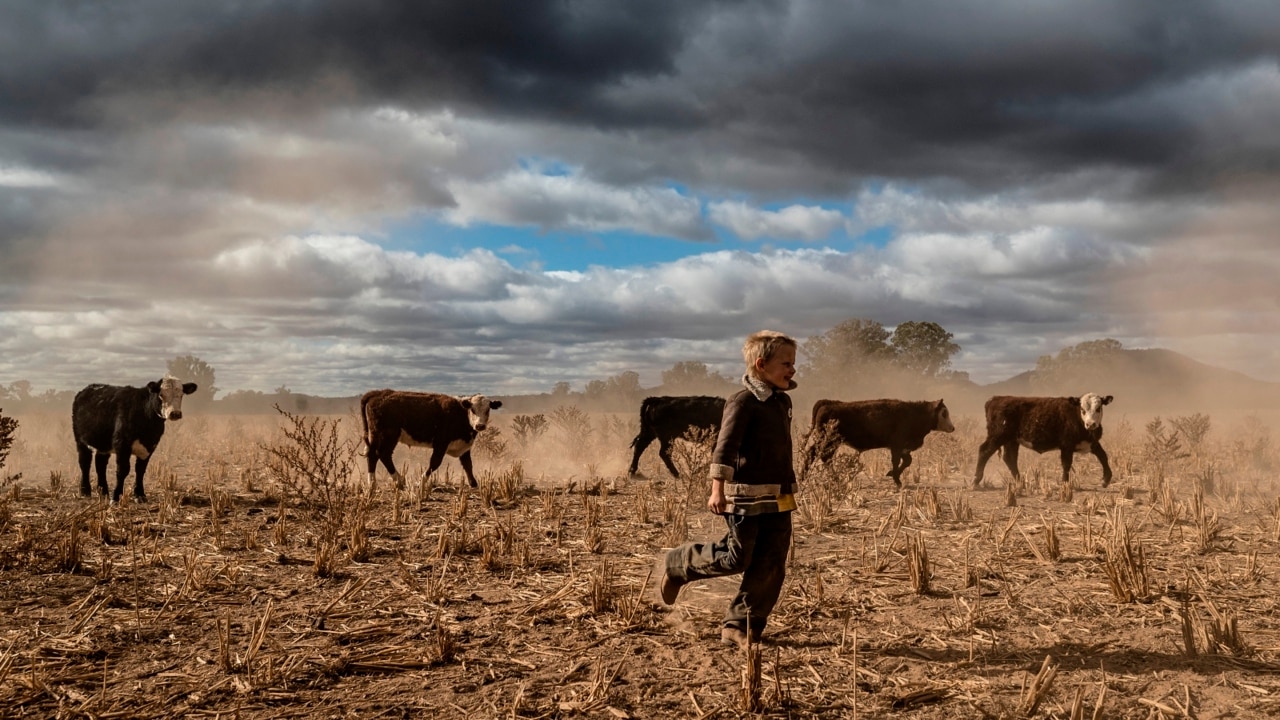
- Government sets up working group to respond to drought
- PM gives $12K to each struggling farmer hit by drought
- Campaign: Eat a parma to help a farmer
- Opinion: The drought’s hurting outback kids, too
- SA farmers caught between deluge and drought
SOUTH Australian farmers are experiencing a year of mixed-fortunes, with patchy rain contributing to a lack of feed and high grain prices proving to be a double-edged sword.
While some farmers will benefit from the prices, others are being priced out of the market and are destocking their properties, or using abstract feed, such as onions, in lieu of fodder.
The lack of rain in some parts of SA has led to some farmers on Eyre Peninsula, the northeast pastoral district and Mid North saying it's the worst conditions they’ve seen in more than 40 years.
In stark contrast, the South-East has recorded more than 490mm of rain at Mt Gambier in the year to date, while parts of the Mount Lofty Ranges recorded 100mm during last week’s downpour.
But one thing is for sure — when there is hardship, the small communities around SA rally behind their farmers in whatever way they can.
On Eyre Peninsula, EPIC Grain Brokers and Mentally Fit EP are uniting to appeal for financial donations, land to agist stock and help baling hay.
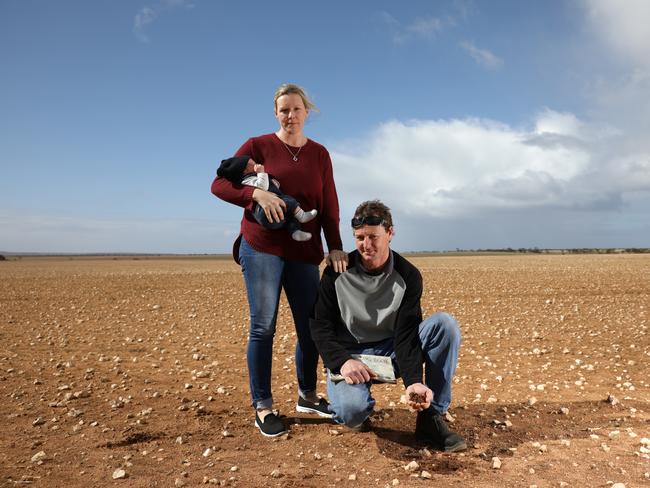
“We’ve had contract balers offer their services and, while it's only early, I’ve had responses from people as far as Kangaroo Island wanting to donate,” EPIC field officer Steve Whillas says. “The response has been overwhelming.”
Mr Whillas says the generosity of others will mean a lot to some farmers in the district, who have had less than a quarter of their average rainfall so far this year.
“There’s a real desperation around at the moment to keep stock alive,” he says.
“When it gets to a point where farmers have to offload animals, it will make it emotionally draining and there will be people challenged financially after this season.”
Sheep, dairy, pig and poultry producers are already feeling the pressure of rising grain prices, on the back of demand from drought-stricken farmers in NSW and Queensland.
Pig producer and stock agent Gary Tiss says people are trying to “hang in there”.
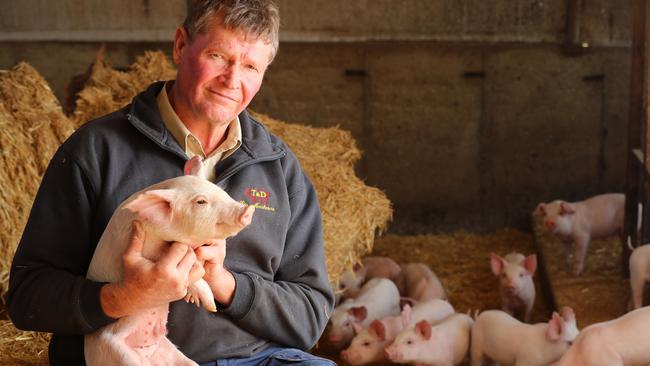
But with the added pressure of poor pork prices and cheap imports, it is becoming increasingly difficult.
“We have about 800 to 1000 pigs and we’re losing money every week — about $30 a head,” Mr Tiss, who farms near Dublin, says.
“This is the worst it’s ever been and I’ve been selling pigs for 40-odd years. Part of it is due to high grain prices and over production with nowhere to sell them.”
Fourth-generation farmer Jason Burton says the patchy rain and strong winds near Cleve marks the worst start to a season he can remember, following two already difficult years.
“We’re reseeding again now and it's the third time in some parts just trying to get ground cover,” Mr Burton says. “But people are keeping their heads up and making do with what they’ve got.
“Technology today has definitely helped the way we go about farming and it’s definitely a lot better than what it was — it’s given us a chance.”
Cleve farmer Ant Harris says he received about 20mm from two rain events last week — the farm’s biggest drenching since January.
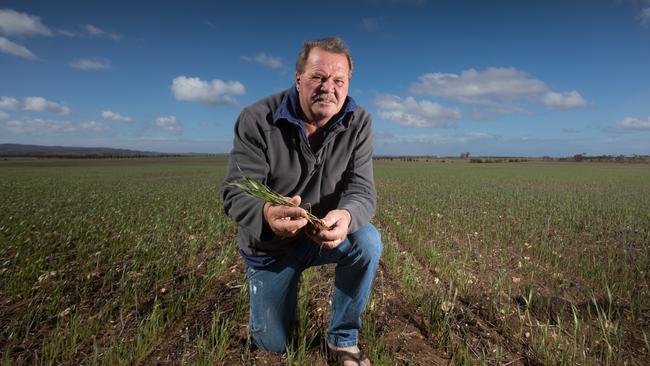
“We normally have a yearly average of about 300 to 350mm and this year we’re only at 90mm so far,” Mr Harris says.
“The farm is just about a write-off — there's nothing here and I reckon half the property I won’t reap. This would be the worst I can remember and I’ve been farming for 41 years.
“You go to Cummins and Tumby Bay and they’re having a magnificent year, and they’re only 100km away.”
Livestock SA president Joe Keynes says a lot more rain is required for a good season, but while “some areas are under extreme stress and in drought, other areas have potential”.
NSW farmer Michael Anderson moved his stock from the drought conditions at his property 2½ hours northeast of Broken Hill to a haven on Fleurieu Peninsula.
“The last time it rained here was October, 2016, so we decided to buy 280 acres at Back Valley, near Victor Harbor, and we’ve been trucking sheep down since January,” Mr Anderson says.
“The property has water security and grain infrastructure. In the event of our season becoming a disastrous drought, we knew we could keep our sheep there. We just didn’t expect it to happen so soon.
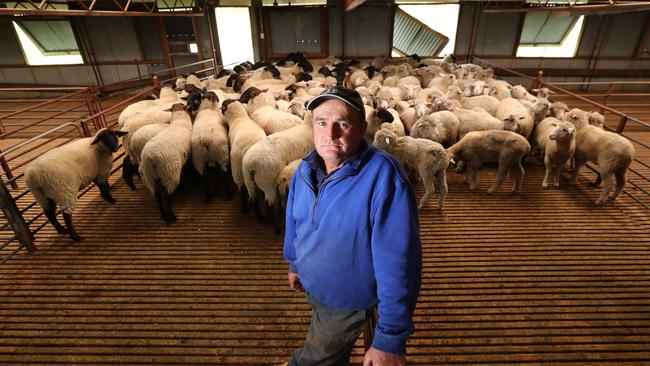
“We’re still feeding them 100 per cent of their dietary requirements, and have been for six months, but we’ve moved from an eight-inch to a 28-inch rainfall area.”
While the Fleurieu, South-East and parts of lower Eyre Peninsula are experiencing decent rainfall, the Bureau of Meteorology says Eyre Peninsula and the northeastern pastoral district have had “severe rainfall deficiencies” in the past 16 months.
If conditions do not improve, more drought-like scenarios are inevitable.
Owen Primary School, prompted by its Year 3/4 students, is holding a “Rope 4 Hope” fundraiser after learning of conditions facing farmers in its community, 75km from Adelaide. The students are selling $2 homemade bracelets in local stores, with the aim of raising enough money to buy hay for farmers in need.
In hotels across the state, the Parma for a Farmer initiative is generating funds for the Buy a Bale campaign, quarantining money raised in each state to help local farmers.
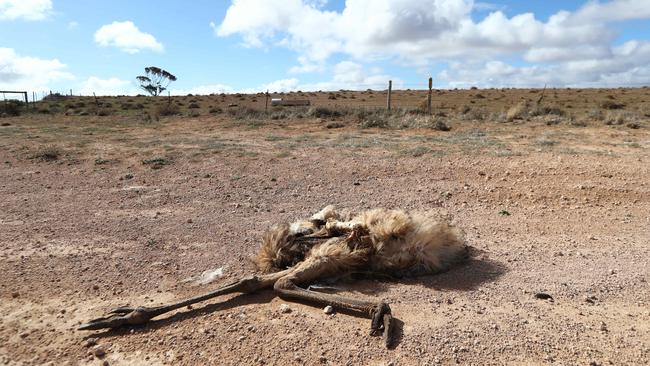
Rural Business Support (RBS) is delivering financial counselling to SA farmers. It also helps them access the Commonwealth’s Farm Household Allowance scheme.
More than 500 SA farmers have accessed the allowance scheme, with a further 26 inquiries this week alone.
The scheme provides households with fortnightly payments totalling about $16,000 a year, and two lump payments in September and March.
Couples will receive up to an extra $12,000, while singles will receive a boost of up to $7200.
RBS chief executive Brett Smith urged farmers to make contact, rather than self-assess, as some “might be short-changing themselves”.
RBS and Pork SA have also identified a need for wellbeing counsellors in rural areas and are in discussions with the State Government.
The Government last week established a working group, made up of industry representatives, to respond to dry conditions affecting farmers and regional communities.
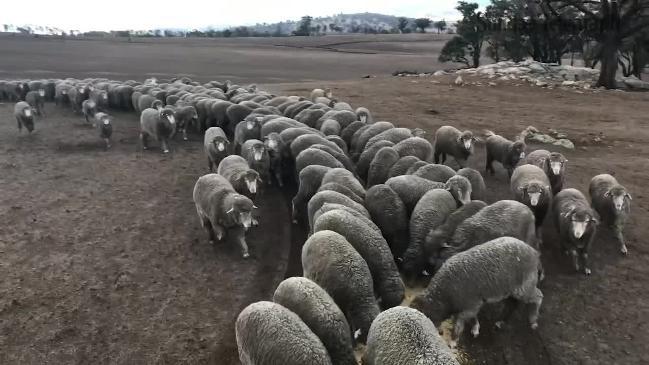
SUPPORT SERVICES:
■ Rural Business Support: For financial counsellors, ph 1800 836 211, or ruralbusinesssupport.com.au
■ Farm Assistance Hotline: For information on the Farm Household Allowance, call, 132 316.
■ BeyondBlue: If you or someone you know is experiencing mental health issues, you can contact, 1300 224 636.
■ Lifeline: 131 114.
■ SA Health: To contact a suicide prevention network, call 8226 1091.
